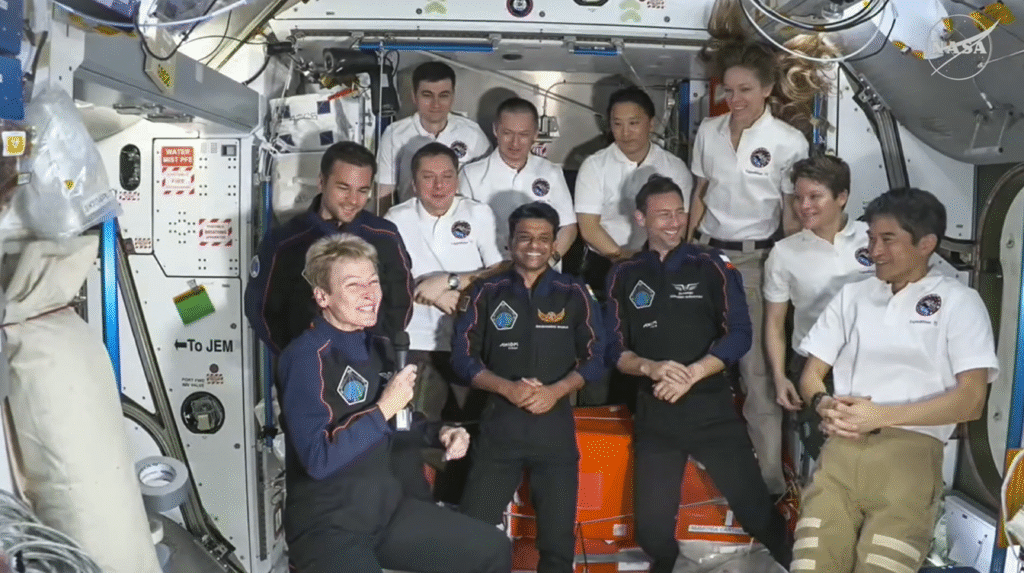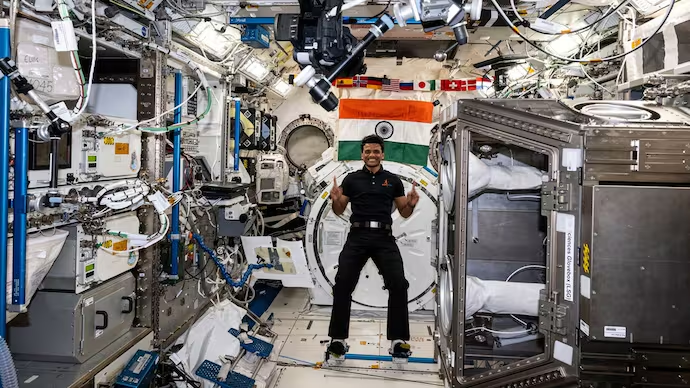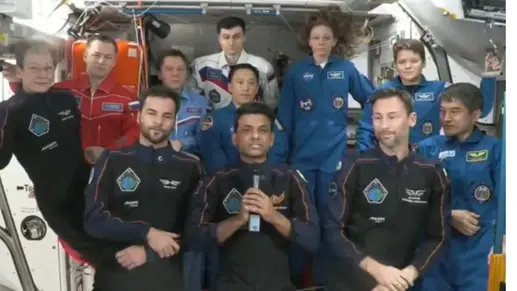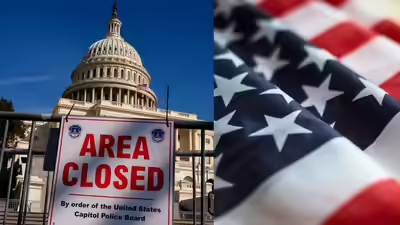Shubhanshu Shukla & Axiom-4 Crew to Undock from ISS Today — 7 Key Steps of the High-Stakes Departure Explained
The Axiom-4 undocking is scheduled for 4:30 PM on Monday, with the splashdown expected off the US coast in California at 3:30 PM (IST) on Tuesday
The Axiom-4 crew, including Indian astronaut Group Captain Shubhanshu Shukla and three others, will undock from the International Space Station (ISS) on Monday and begin their return journey home.
the Axiom-4 undocking is scheduled for 4:30 PM on Monday, with the splashdown expected off the US coast in California at 3:30 PM (IST) on Tuesday.

After the undocking, the spacecraft will undergo departure and phasing burns before starting its orbit around the Earth, adjusting its position and timing for atmospheric re-entry.
The spacecraft’s service module will then jettison at around 350 kilometres altitude, and the capsule will perform a deorbit burn to slow down enough to drop from orbit and begin a controlled re-entry into the atmosphere.
In the next three phases of the return journey, the capsule’s nosecone will close, turning to point the entry shield down towards the Earth. The shield will help the capsule absorb extreme 1,600 degrees Celsius, and the crew is expected to experience a strong G-force coming down.
When the capsule descends to an altitude of around 5.5 kilometres, the two drogue parachutes will be deployed to stabilise the descent. Four more parachutes will then come into play at an altitude of around 1.8 kilometres to obtain a safe splashdown speed.
The capsule will then splash down in the Pacific Ocean off the California coast. The SpaceX recovery teams will be deployed to retrieve it and check for hazards before opening the hatch and medically attending to the crew. The crew will then start their 7-day rehabilitation protocol to readjust to Earth’s gravity.
A formal farewell ceremony on the ISS on Sunday was marked by brief remarks by the Ax-4 crew. Some of them appeared to get emotional as they hugged the members of Expedition 73, with whom new friendships were forged during the stay.
Group Captain Shubhanshu Shukla reprised the words of his icon, Wing Commander Rakesh Sharma, the first Indian to go to space in 1984. He said that India still looks ‘Saare jahan se achaa‘ from space.
“We all are still curious to know how India looks today from above. Aaj ka Bharat mahatvakanshi dikhta hai. Aaj ka Bharat nidar dikhta hai, Aaj ka Bharat confident dikhta hai. Aaj ka Bharat garv se purn dikhta hai. (Today’s India looks full of ambition, fearless, confident and full of pride). It is because of all these reasons, I can say it once again that today’s India still looks ‘saare jahan se accha’,” Shukla said.

“Jaldi hi dharti pe mulaqat karte hai (we will meet on earth soon),” Shukla said at the farewell ceremony.
The Axiom 4 (Ax-4) crew Commander Peggy Whitson, Pilot Shubhanshu “Shux” Shukla, and Mission Specialists Slawosz “Suave” Uznanski-Wisniewski and Tibor Kapu embarked on the space odyssey on June 25 from Florida and docked at the ISS on June 26.
The final days of the 18-day stay of the Ax-4 crew at the ISS were marked by feasts and farewells with seven other residents of the orbital laboratory.
It has been a historic trip for Shukla, who became the first Indian to travel to the ISS and only the second to travel to space after Rakesh Sharma’s pathbreaking spaceflight as part of the then Soviet Union’s mission to Salyut-7 space station in 1984.
So far, Shukla has spent 18 days in space, witnessing 16 sunrises and sunsets every day as the ISS travels at a speed of 28,000 km per hour in an orbit about 400 km above the Earth.
ISRO paid approximately ₹550 crore for Shukla’s travel to the ISS, an experience that will help the space agency in the planning and execution of its human spaceflight programme, Gaganyaan, set to take to orbit in 2027.








